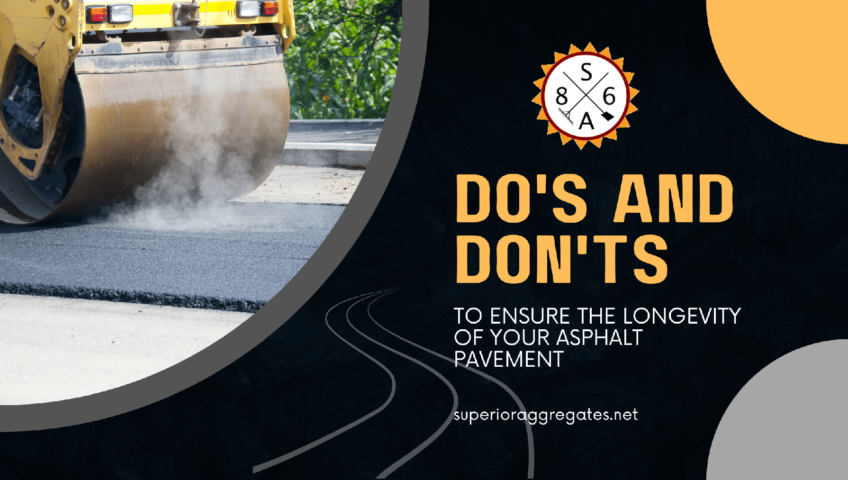
Do’s and Don’ts to Ensure the Longevity of Your Asphalt Pavement
There’s nothing like a fresh coat of asphalt pavent to make your property or business look inviting and taken care of. You want to keep that look for as long as possible, and that means taking proper care of the material immediately after the asphalt contractors have left. The following is a look at the do’s and don’t’s of maintaining your asphalt to maintain its fresh appearance until it’s time for maintenance or replacement many years from now.
The Do’s of Maintaining Your Asphalt
Asphalt has a lifespan of about 18 years before it needs a total replacement. The clock starts running the moment the asphalt work is completed, but it can take up to a year for asphalt to cure. It’s vital to protect your asphalt after the work has been completed, but you can start using it gently once the initial curing period has been completed.
In order to give your asphalt pavent a good start, be sure to do the following:
- Block access to cars for the first 24 hours
- Clean up debris to prevent it from damaging the surface
After the asphalt sets, you can drive and park cars on the driveway or parking spots. Careful use of the paved surface for the next 12 months is recommended, and it’s easy to engage in by making sure cars don’t sit in one place for more than a day or two. As time goes by, you’ll want to take steps to protect your asphalt. They include:
- Keep it clean with regular washing and sweeping of debris
- Patch cracks as soon as they appear
- Seal the driveway on a regular interval, usually every three to five years
- Make sure water is draining off the driveway and not pooling
- Remove weeds from the edge of the driveway
The Don’ts’ of Maintaining Your Asphalt
Asphalt is tough, but it’s also malleable and compresses under pressure. It can also get damaged by oil leaks from a vehicle that sits in one place for too long. You definitely want to avoid parking your car in the same spot in the days immediately after the asphalt was laid, but you also shouldn’t park in the same place every time you come home. The same goes for keeping heavy objects on the asphalt for long periods of time, as you’ll wind up with divots forming in the asphalt that aren’t easy to repair.
Other don’t’s include:
Don’t let a car drip oil onto the asphalt
Vehicles are known to leak oil which isn’t always a serious problem in and of itself. It is a serious problem for asphalt as it can cause cracks to form.
Don’t seal coat for at least three years
The oil in the asphalt takes time to dry out and eventually needs refreshing in the form of a seal coat. This is a normal process that should be allowed to play out over time before having asphalt contractorsapply a new coat. The new seal coat should interact with the old coat as little as possible in order to provide the best protection.
Don’t let snow and ice build up on the surface
Asphalt is porous in nature and is easily damaged by frost-freeze cycles. Allowing ice and snow to build up increases the risk of damage to the asphalt from the top down to the bottom layer.
Proper maintenance of your asphalt helps it function for longer, prevents divots from forming, and requires fewer repairs over its lifespan. Use these do’s and don’t’s as part of regular property maintenance for a safe and attractive surface for people and cars to use.
